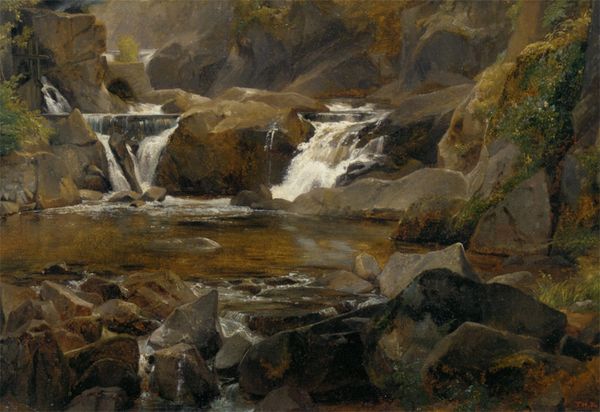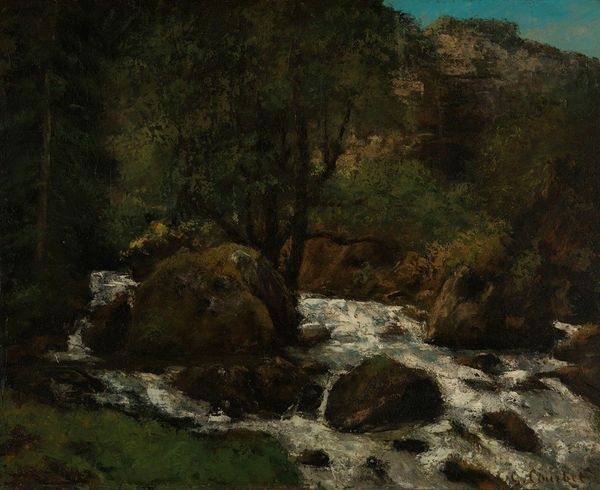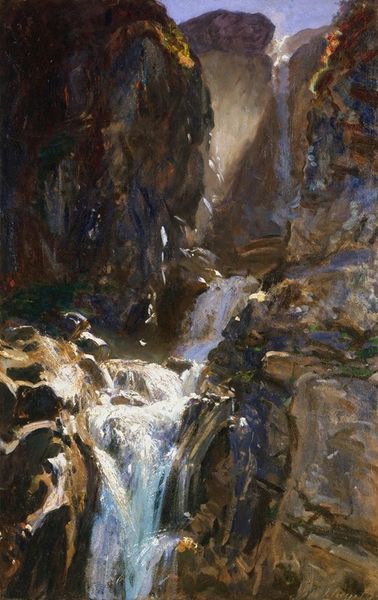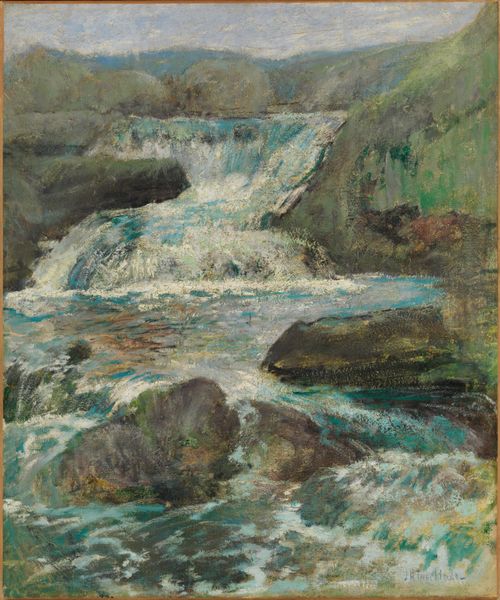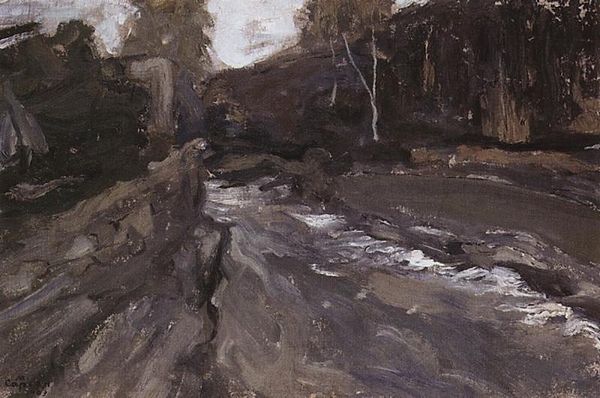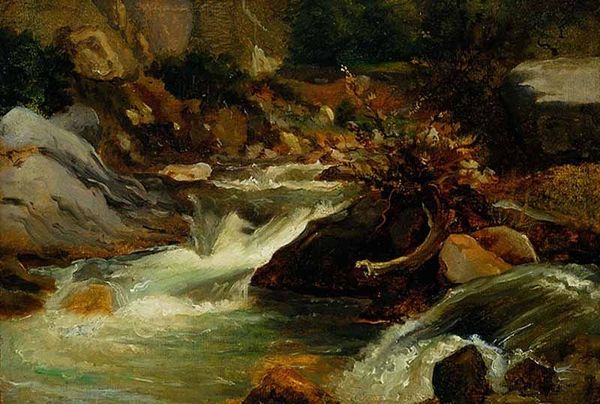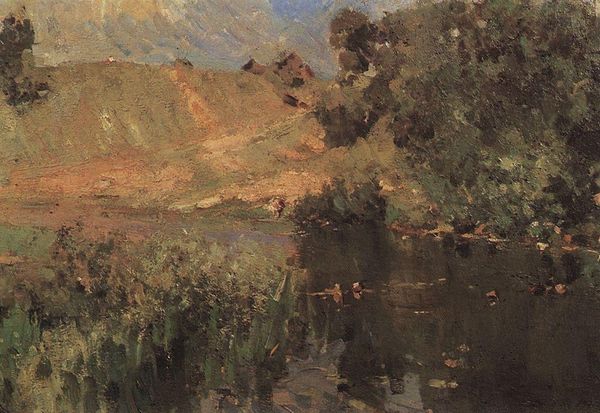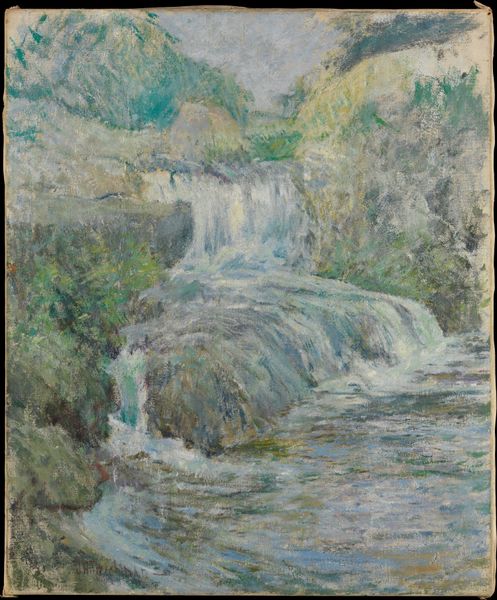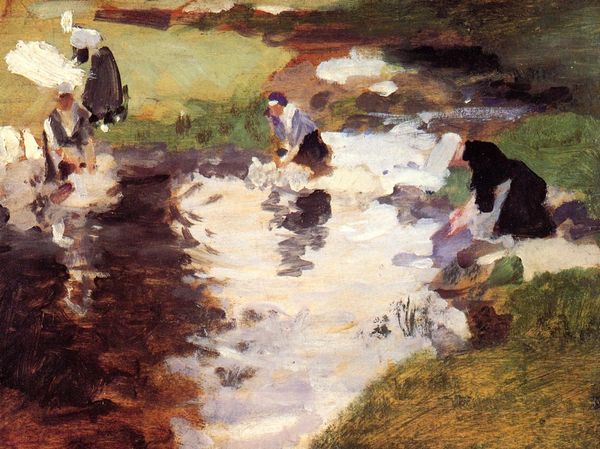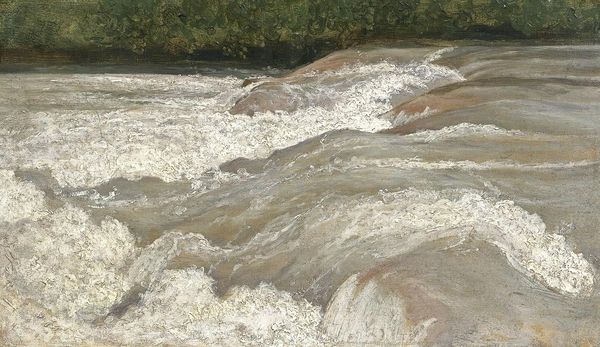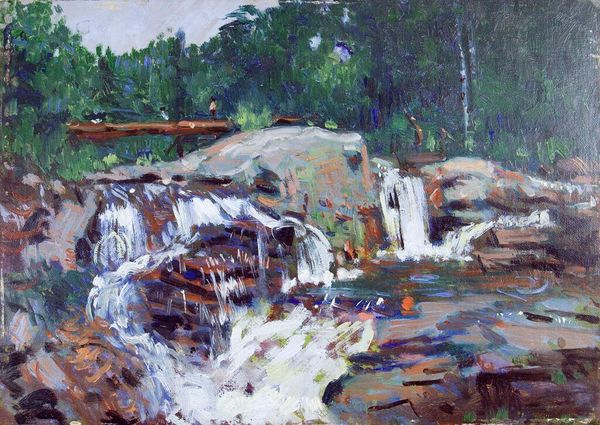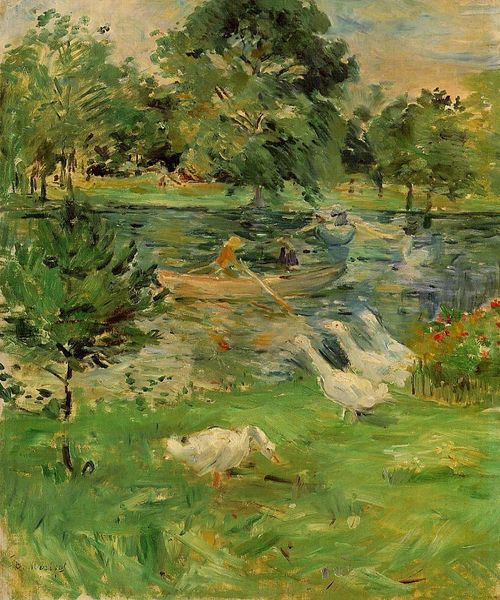
Dimensions: 27.94 x 38.1 cm
Copyright: Public domain
Curator: Sargent captured this lively scene in his oil painting "A Mountain Stream, Tyrol," around 1914. Editor: My initial impression is one of dynamic energy—a torrent rendered in such fluid strokes that you can almost hear the rushing water. Curator: Notice how the cascading water is depicted using rapid, broken brushstrokes of white and pale blue—a very Impressionistic way of capturing light and movement. The stones, rendered in earth tones, seem to ground the frenetic energy of the water, don’t they? Editor: Absolutely. The dark, grounded stones around the cascade not only frame the chaotic element of the cascade of water, but also introduce a symbolism, wherein the human being can remain grounded within oneself despite turbulent chaos around them. Sargent may have used this to speak to the era and premonition of turbulence prior to WWI. Curator: It’s quite plausible that Sargent, painting this in 1914, was unconsciously reflecting the increasing sense of unease. In this painting, the stream perhaps mirrors that historical sense of imminent change and tumult. Even natural landscape couldn't escape being imbued with a darker societal and emotional undercurrent. Editor: That is quite possible, and a wonderful example of how even a plein-air landscape painting such as this reflects on that artist's era. Curator: His bold brushwork is indeed something to behold; he clearly had mastered the craft. The ability to capture such fleeting motion on a canvas so powerfully is so impressive. Editor: A fascinating, multi-layered representation—it is in pieces such as these where art surpasses itself as aesthetic to act as a symbolic container. Curator: Sargent was always exploring, even in what appear to be simple landscapes, finding meaning within the play of light and the arrangement of forms. It causes you to want to stay and reflect further, doesn't it?
Comments
No comments
Be the first to comment and join the conversation on the ultimate creative platform.
